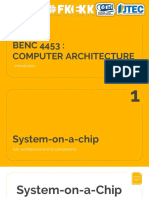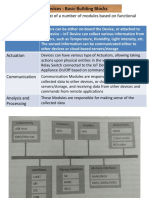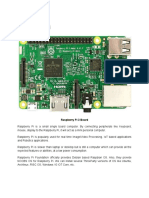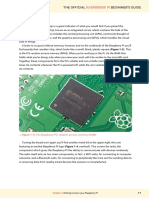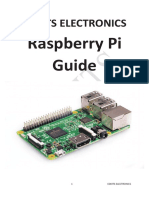0% found this document useful (0 votes)
120 views2 pagesRaspberry Pi Components and Peripherals Detailed Notes
The Raspberry Pi board features multiple power pins, including two 5V and two 3.3V pins, with GPIO pins for connecting components and supporting various protocols. It is powered by an ARM11 processor, with RAM options varying by model, and includes connectivity options like Ethernet, USB ports, HDMI, and audio outputs. Additionally, it has slots for SD cards, interfaces for displays and cameras, and onboard status LEDs for monitoring functionality.
Uploaded by
vasanthkv1982004Copyright
© © All Rights Reserved
We take content rights seriously. If you suspect this is your content, claim it here.
Available Formats
Download as PDF, TXT or read online on Scribd
0% found this document useful (0 votes)
120 views2 pagesRaspberry Pi Components and Peripherals Detailed Notes
The Raspberry Pi board features multiple power pins, including two 5V and two 3.3V pins, with GPIO pins for connecting components and supporting various protocols. It is powered by an ARM11 processor, with RAM options varying by model, and includes connectivity options like Ethernet, USB ports, HDMI, and audio outputs. Additionally, it has slots for SD cards, interfaces for displays and cameras, and onboard status LEDs for monitoring functionality.
Uploaded by
vasanthkv1982004Copyright
© © All Rights Reserved
We take content rights seriously. If you suspect this is your content, claim it here.
Available Formats
Download as PDF, TXT or read online on Scribd
/ 2


